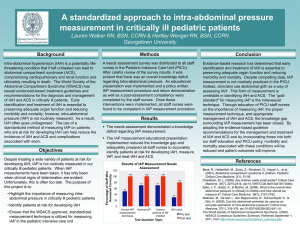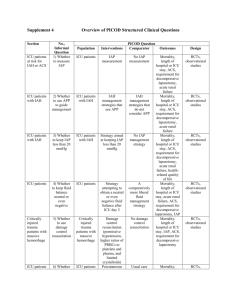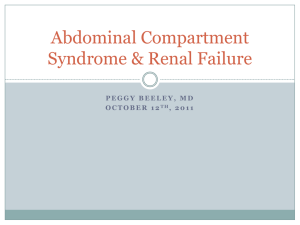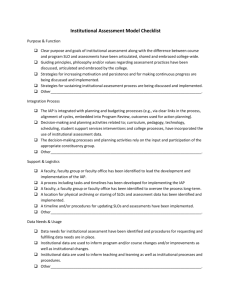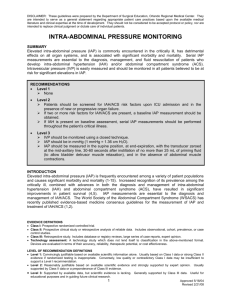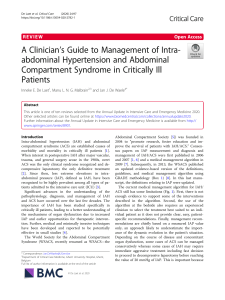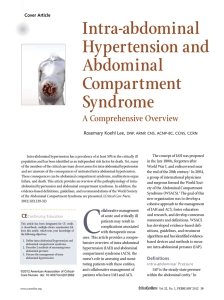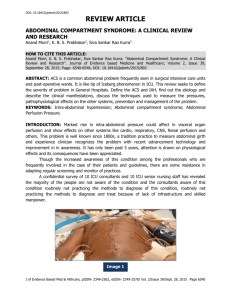Postal questionnaire
advertisement
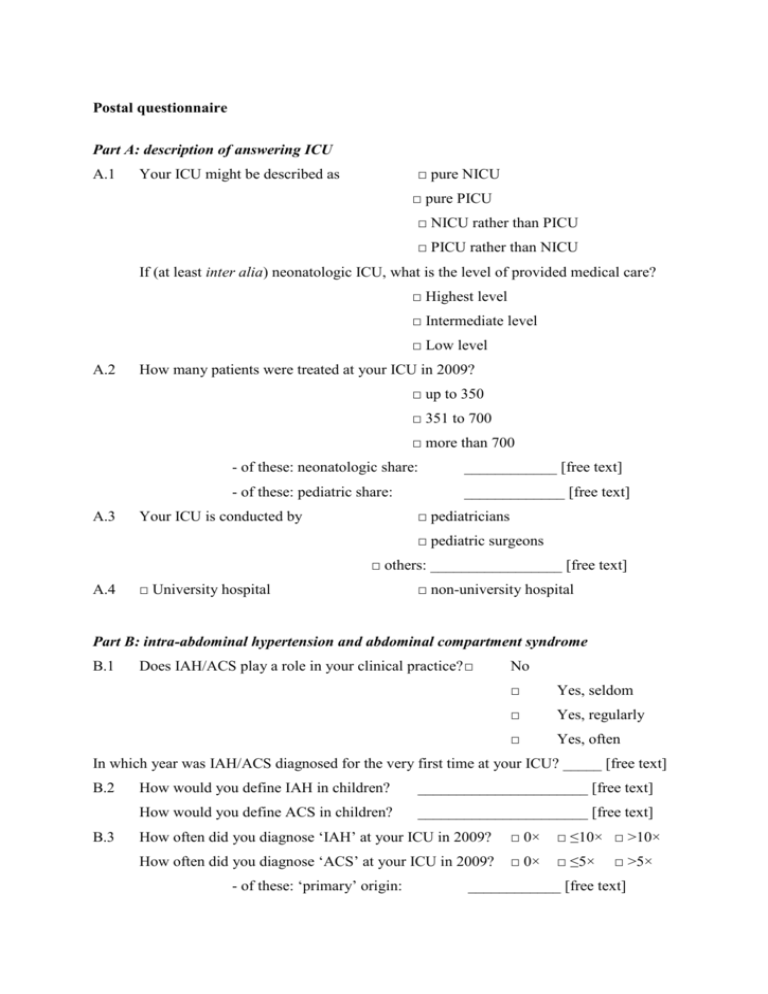
Postal questionnaire Part A: description of answering ICU A.1 □ pure NICU Your ICU might be described as □ pure PICU □ NICU rather than PICU □ PICU rather than NICU If (at least inter alia) neonatologic ICU, what is the level of provided medical care? □ Highest level □ Intermediate level □ Low level A.2 How many patients were treated at your ICU in 2009? □ up to 350 □ 351 to 700 □ more than 700 A.3 - of these: neonatologic share: ____________ [free text] - of these: pediatric share: _____________ [free text] □ pediatricians Your ICU is conducted by □ pediatric surgeons □ others: _________________ [free text] A.4 □ University hospital □ non-university hospital Part B: intra-abdominal hypertension and abdominal compartment syndrome B.1 Does IAH/ACS play a role in your clinical practice? □ No □ Yes, seldom □ Yes, regularly □ Yes, often In which year was IAH/ACS diagnosed for the very first time at your ICU? _____ [free text] B.2 B.3 How would you define IAH in children? ______________________ [free text] How would you define ACS in children? ______________________ [free text] How often did you diagnose ‘IAH’ at your ICU in 2009? □ 0× □ ≤10× □ >10× How often did you diagnose ‘ACS’ at your ICU in 2009? □ 0× □ ≤5× - of these: ‘primary’ origin: □ >5× ____________ [free text] - of these: ‘secondary’ origin: ____________ [free text] - of these: origin not distinguishable: ____________ [free text] B.4 Please estimate (in percent), how often children of the following age classes are hit by IAH and ACS at your ICU: Preterms/newborns Sucklers/infants Toddlers Pupils Adolescents IAH ACS B.5 Describe your diagnosis-making process concerning IAH and ACS (mark with cross): IAH ACS Exclusively based on clinical symptoms Based on clinical symptoms plus IAP measurement results Exclusively based on IAP measurement results Please state three clinical symptoms (in descending order of significance) which you deem most important when diagnosing IAH/ACS [free text]: (1) ________________ B.6 (2) ________________ (3) ________________ Do you measure intra-abdominal pressures (IAP) regularly? -No, because □ we exclusively diagnose IAH and ACS clinically □ no adequate technical equipment is available □ of its technical expenditure □ of its personnel expenditure □ IAH would not have any therapeutical consequence if proved -Yes, □ of its accompanying danger of infection □ of its invasiveness □ but only in cases of clinical signs of IAH and ACS □ but only in cases of organ dysfunction and/or failure □ once per day □ two times per day □ three to four times per day □ continuously or more than times per day, respectively B.7 If yes, which method do you use to measure intra-abdominal pressures? □ Directly via intra-abdominal placed pressure probes Which type? □ Indirectly via □ _________________ [free text] intra-vesical pressure measurement (bladder pressure) B.8 □ intra-gastric pressure measurement □ intra-rectal pressure measurement □ peak inspiratory pressure measurement □ others: __________________ [free text] Would you measure intra-abdominal pressure more often if handling would become easier and more standardized (e.g., comparable to CVP measurements)? □ B.9 □ Yes No Please name three disease patterns which to your experience most often induce IAH and ACS dependent on the age group (free text): Preterms/newborn Sucklers/infants Toddlers Pupils Adolescents s 1st cause 2nd cause 3rd cause B.10 At which IAP value would you induce medical (non-invasive), interventionaldecompressive or surgical-decompressive therapy options dependent on the age group [free text]? Preterms/newborns Sucklers/infants IAP > 5 mmHg IAP > 10 mmHg IAP > 15 mmHg Toddlers Pupils Adolescents B.11 Which condition would make you decide to surgically decompress children with IAH? □ Persisting IAP > 10mmHg □ without signs of organ dysfunction(s) □ plus signs of organ dysfunction(s) □ Persisting IAP > 15mmHg □ without signs of organ dysfunction(s) □ plus signs of organ dysfunction(s) □ Persisting IAP > 20mmHg □ without signs of organ dysfunction(s) □ plus signs of organ dysfunction(s) B.12 How often did you perform surgical decompressions among children suffering from ACS at your clinic in 2009? ________ [free text] Please estimate the survival rate of children suffering from ACS at your clinic in 2009: (A) After decompressive laparotomy: ________ [free text] (B) Without decompressive laparotomy: ________ [free text] Would you again perform decompressive laparotomy in cases of ACS? □ Yes □ No
